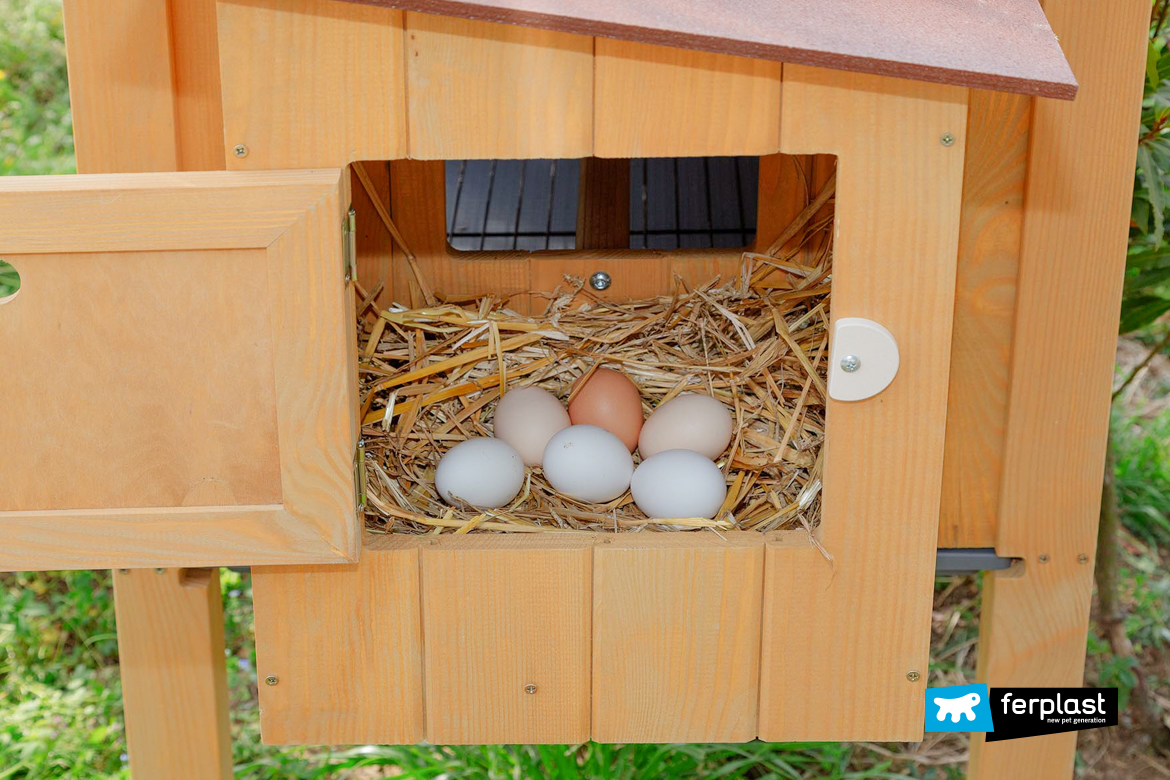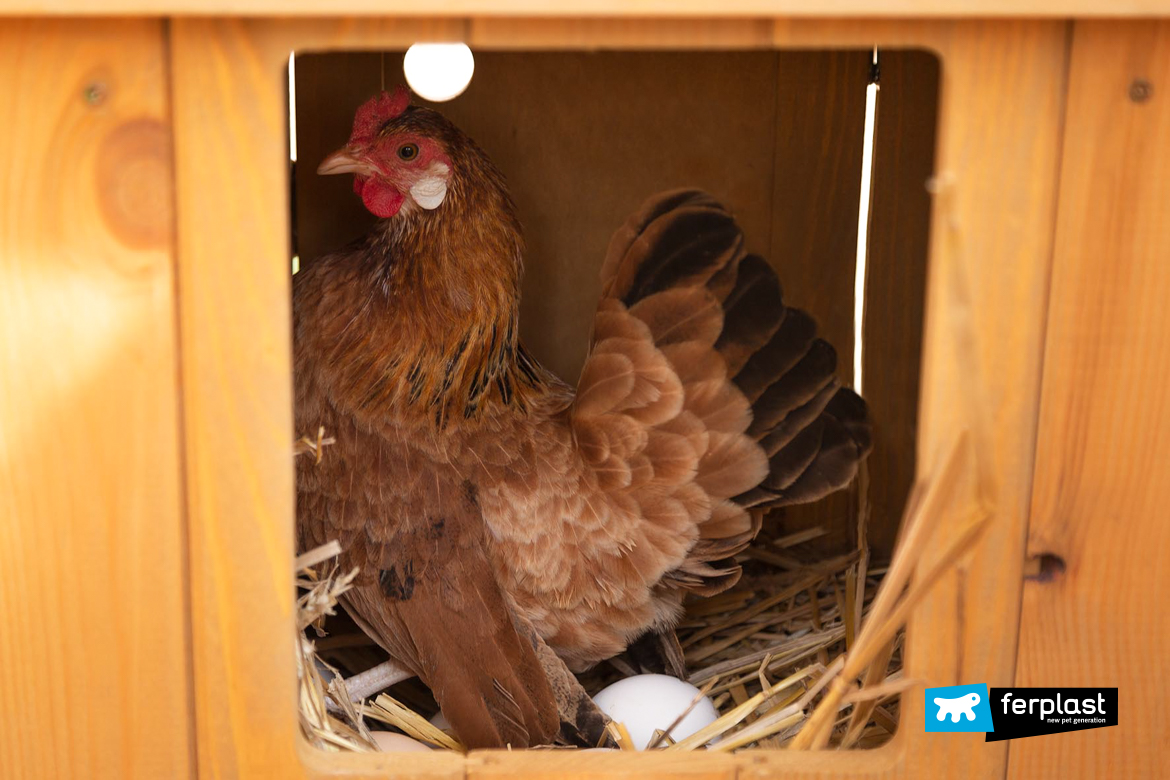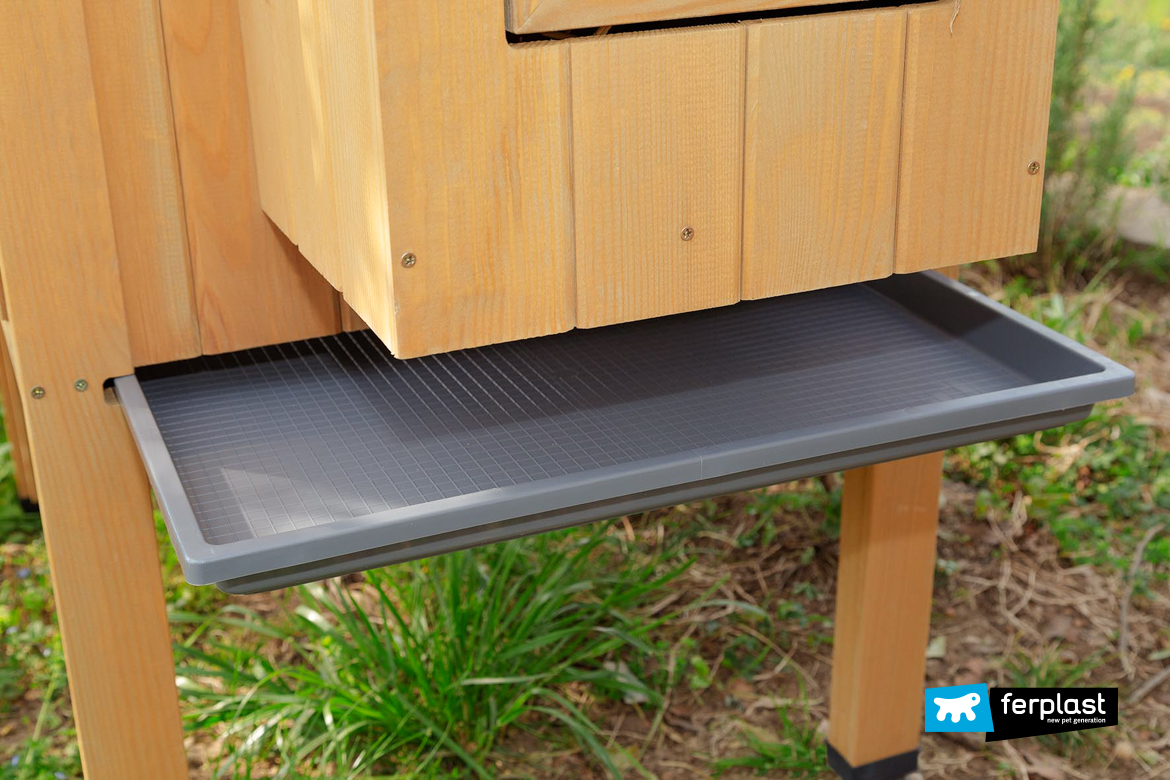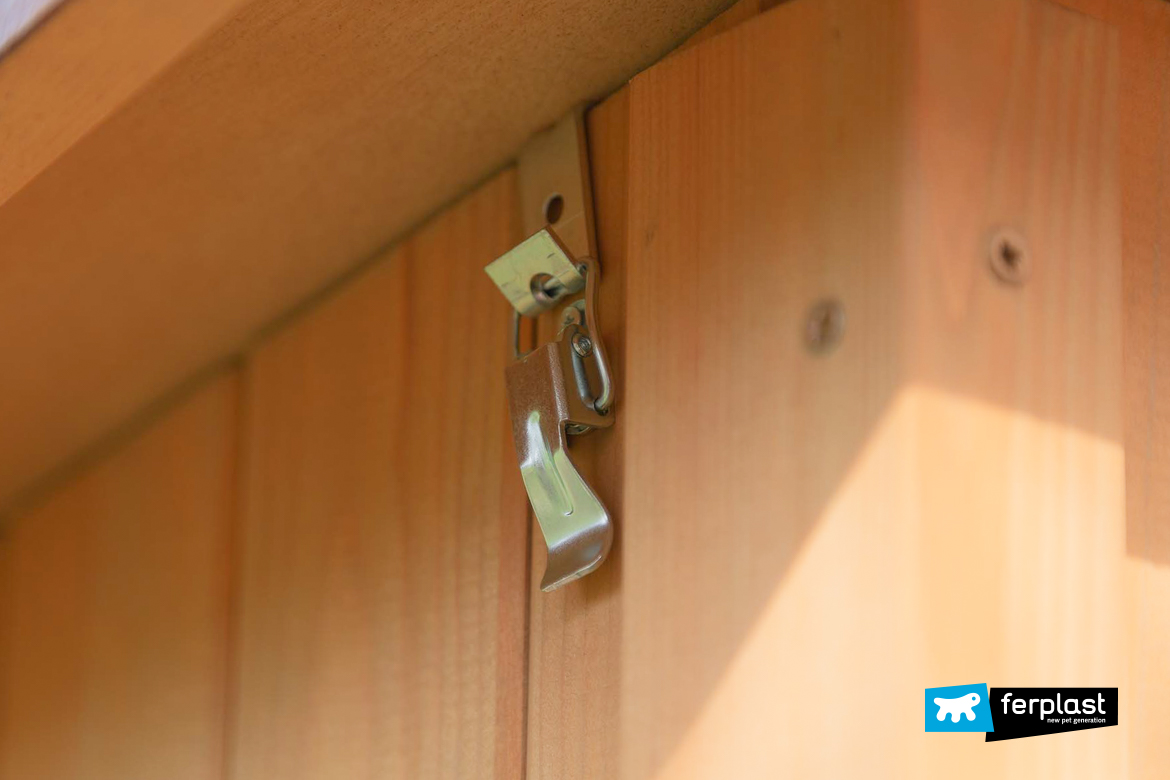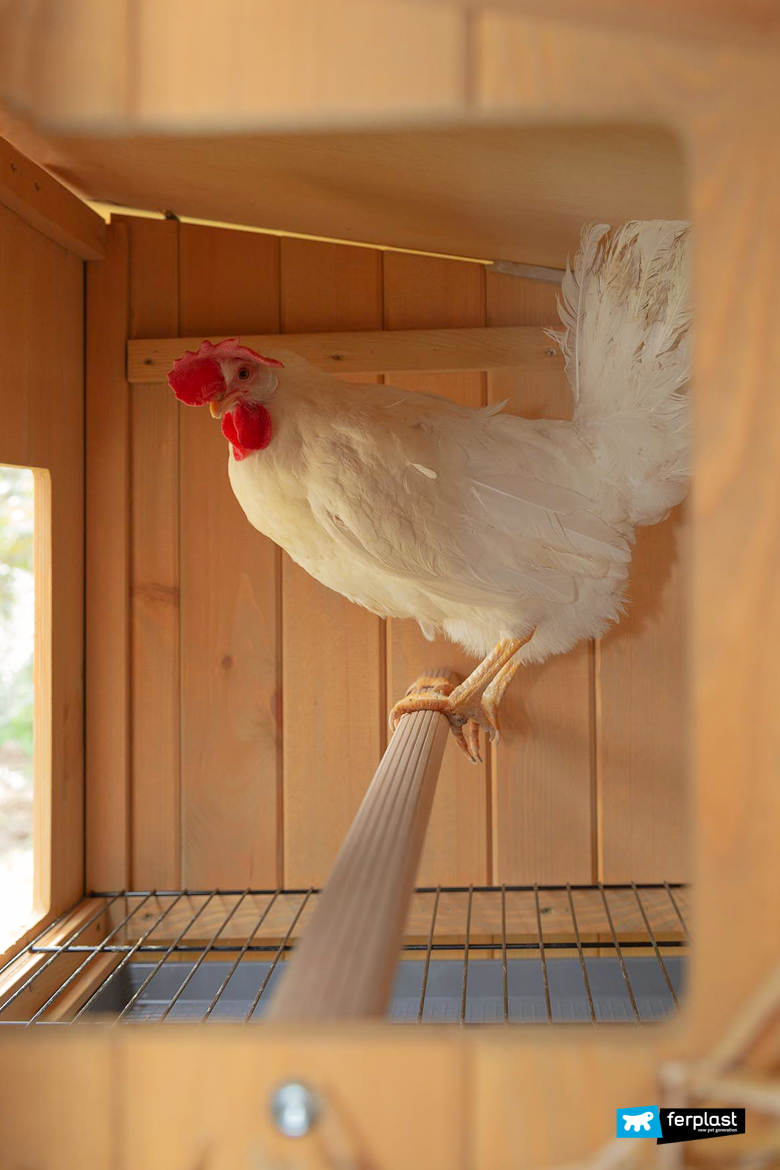Are you thinking of rearing egg-laying hens in your garden to have a ready supply fresh eggs at all times? If you are lucky enough to have a green space available and if the neighbours agree, rearing hens in the garden might be a really good idea! Let’s see why and how to do it with some practical advice.
Rearing egg-laying hens in the garden is undoubtedly a great way of being in contact with nature again, as well as having fresh, organic and literally zero-kilometre eggs available every day. Do you know what a domestic hen’s egg tastes like? If you do, that’s more than enough to make you want to keep a few hens in the garden.
How many egg-laying hens should you keep?
The question to ask yourself at this point is: how many hens do I want to keep? This depends on the space available and the number of eggs you need. A hen generally produces one egg per day, or two every three days, and keep in mind that if you give a few eggs to your neighbours every so often, they might be happier about the presence of your new tenants.
Where to put the chickens: choosing the right chicken coop
The first and most fundamental thing to do to rear egg-laying hens in the garden (apart from asking for the consensus of your neighbours) is to set up and equip the area you have chosen. To do this, you can build a chicken coop yourself or buy a prefabricated one. This should include a closed space, meaning a little house in which the hens can sleep, lay their eggs and be sheltered from weather conditions, and a pen to prevent them from escaping and to protect them from attacks by other animals. Make sure that the fence is solid and closed on top: this is to prevent predators from entering and also because hens are able to make quite impressive, albeit short flights. To make your life easier, we at Ferplast offer two solutions: Happy Farm and Hen House.
Ferplast’s Happy Farm and Hen House chicken coops
Happy Farm is a plastic chicken coop with a ladder providing access, equipped with a little house for collection of the eggs, a security locking system for the little doors, an internal perch with a protection grille and a practical removable drawer to collect the dirt. Furthermore, the roof can be opened completely while a protective curtain on the front window allows the hens to be sheltered from the sun and from the elements. Happy Farm can contain a maximum of 6 hens.
Hen House is a chicken coop equipped with the same options as Happy Farm (except the protective curtain, because there is no front window), but it is made of solid wood with cute decorations on the little doors. All of Ferplast’s wooden products fully respect the environment, using eco-sustainable wood, which guarantees their origin from responsibly managed forests. Hen House is available in two sizes, one for a maximum of 4 hens and one for 6.
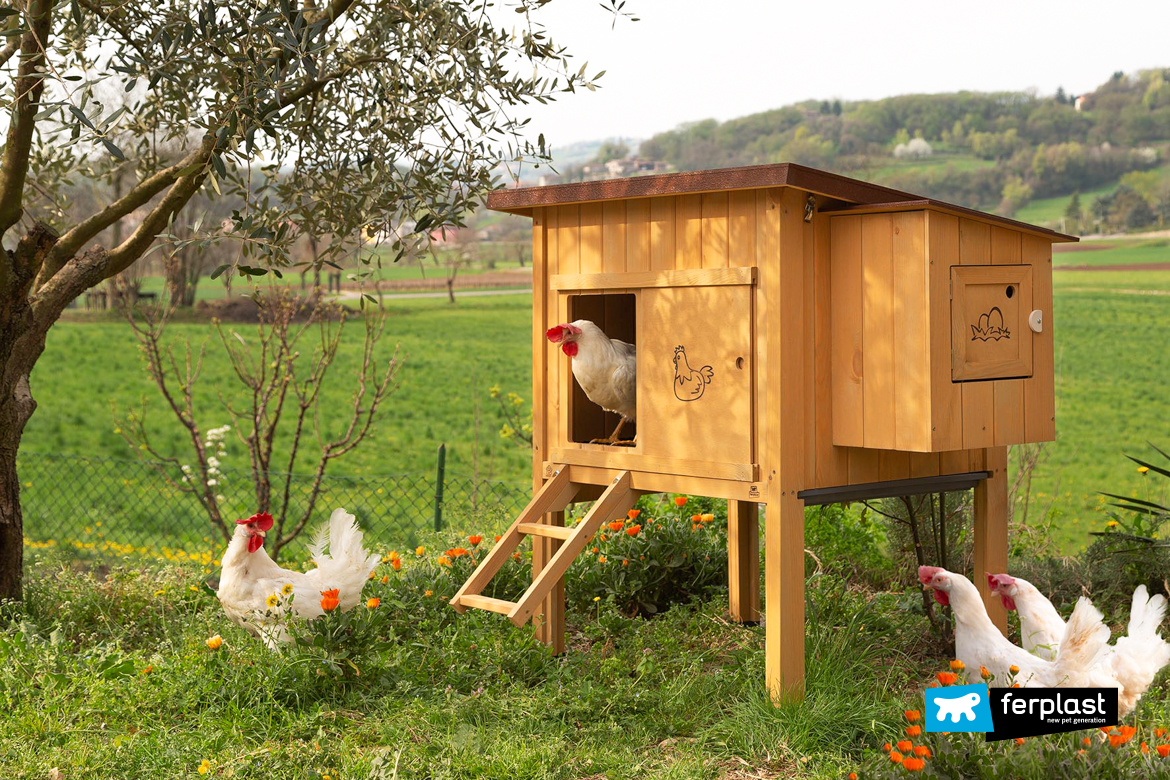
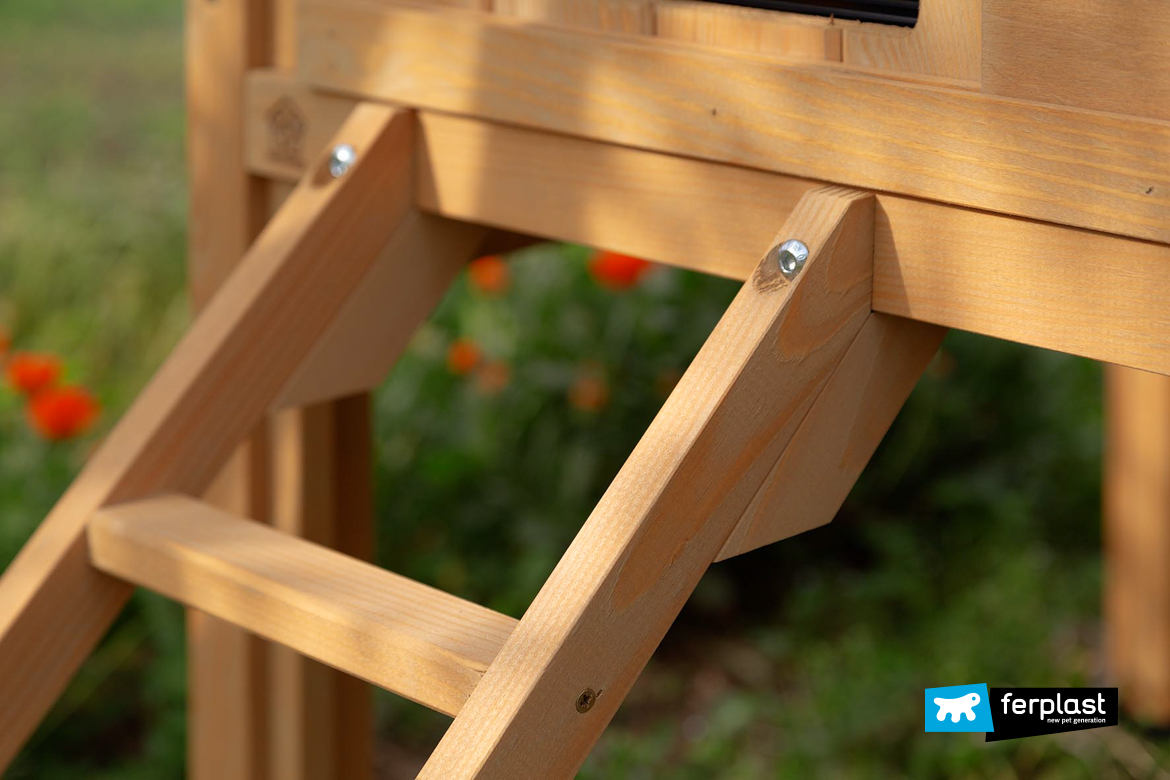
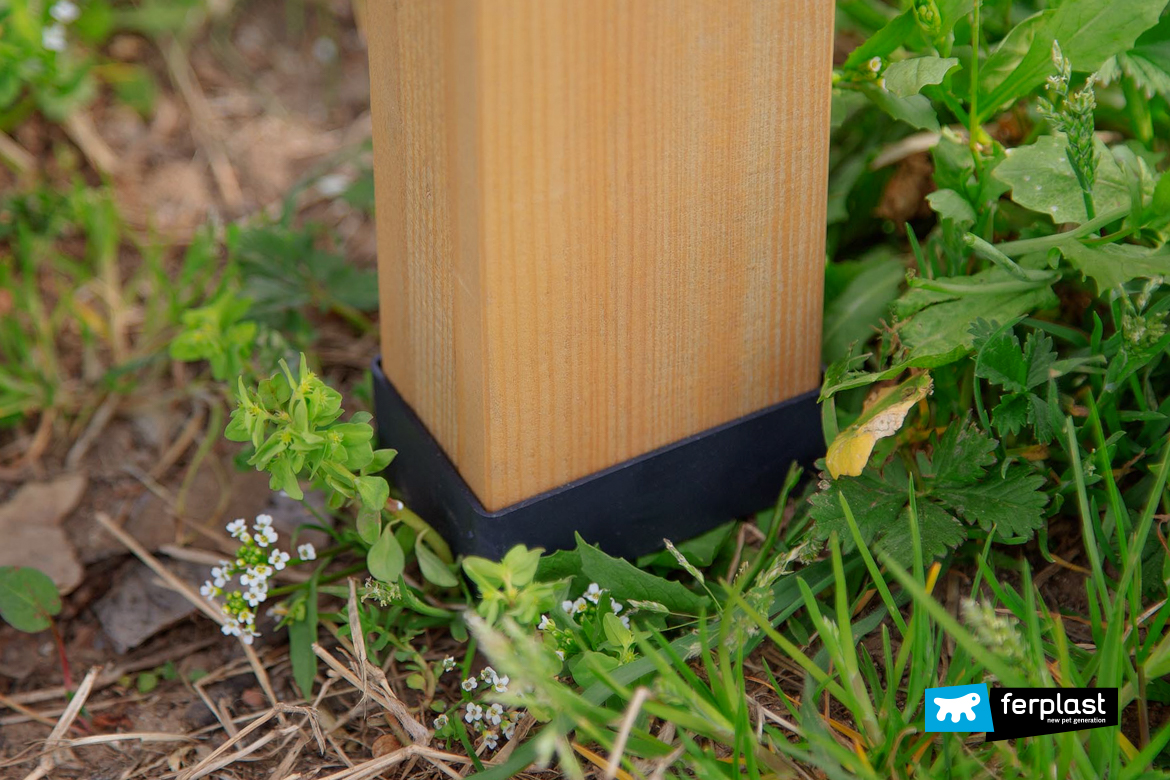
In addition to the chicken coop, you can also purchase the pen with possible extensions, so that you can expand it as you prefer. Lastly, to nourish your hens, you will need a feeding trough and a drinking bottle (they must always have water available to them). We also suggest that you provide some sand so that the hens can “wash themselves” and keep their plumage clean.
How to get your hens accustomed to domestic life
Making the new arrivals settle in is quite simple. For the first few days, it is wise to keep the hens closed inside the pen and then lead them into the chicken coop at sunset. It won’t be long before they go to sleep in their new home. After the initial period of acclimatisation, if you have the possibility, you can let them scratch around freely for a few hours every day, allowing them to feed on grass, insects, seeds and minerals from the soil. Lastly, to facilitate their laying, you can leave an egg inside the nest. Be constant in collecting the eggs: check at least once every day to see if there are any eggs and if there are, be sure to collect them, otherwise they might get broken accidentally by the hens themselves.



